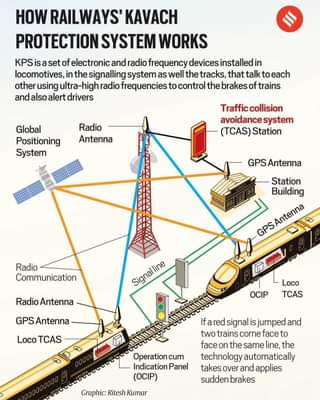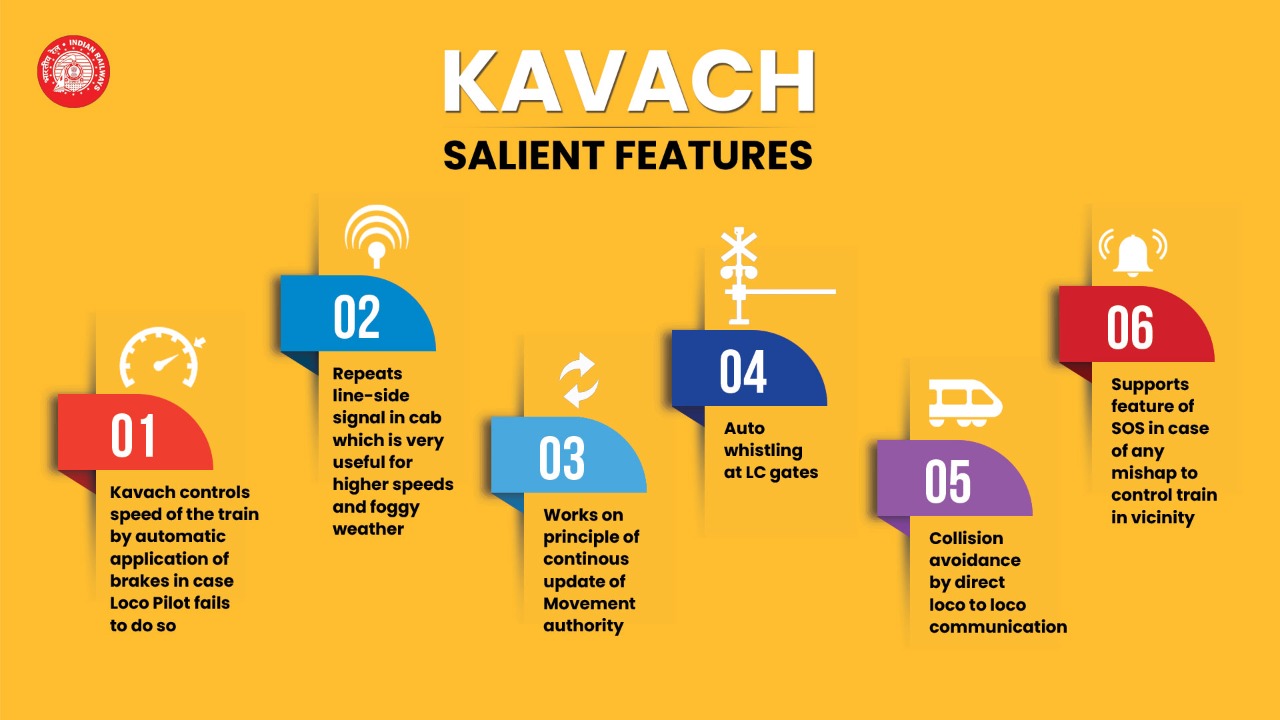Jammu-Poonch highway
Recently, the Border Roads Organisation (BRO) achieved a breakthrough in a vital tunnel along the 250-km long and strategically important National Highway (NH) 144A in Jammu and Kashmir.
Border Roads Organisation (BRO) was formed on 7 May 1960 to secure India’s borders and develop infrastructure in remote areas of the north and north-east states of the country.
National Highway, NH-144A is a 2-lane road which starts from Jammu and goes up to Poonch districts. It also provides road connectivity to Akhnoor sub division.
- The tunnel forms part of NH upgradation project under Prime Minister’s Development Package announced in November 2015 as Reconstruction Plan for Jammu and Kashmir.
Breakthrough is a point, where the tunnel from both the ends meet.
- Upgradation – The NH 144A is being upgraded from the existing 2 lanes to 4 lanes.
- Implementation
- NHIDCL executes the 4-laning of the highway from Jammu to Akhnoor.
- BRO executes the remaining work from Akhnoor to Poonch under the Project Sampark.
National Highways and Infrastructure Development Corporation Limited (NHIDCL) is a fully owned company of the Government of India, set up in 2014 for managing a network of over 10,000 km of National Highways out of 1,15,000 km in India.
- Civilian significance – It provides speedy and all-weather road connectivity to people living in the border districts.
- It helps to manage and control the increase in vehicular traffic and frequent road accidents.
- It results in socio-economic growth.
- Defence significance – The road touches the border areas, and thereby essential for national security.
- It allows speedy movement of defence vehicles to areas along the Line of Control (LOC).
Reference
Indian Express| Jammu-Poonch Highways
World Local Production Forum (WLPF)
The Indian delegation is going to participate in the 2nd World Local Production Forum (WLPF) at the World Forum, The Hague in Netherlands in November 2023.
- WLPF is a platform to generate actionable recommendations to support local production of medicines and healthcare technologies.
- Created by – World Health Organisation (WHO).
- The 1st edition of WLPF was organized virtually in 2021.
- Aims
- To emphasize the importance of health product production as a vital long-term infrastructure.
- To promote strengthening local production of medicines and other health technologies.
- To improve timely and equitable access to quality assured health products.
- To strengthen global, regional, and national health security.
- Secretariat – The Local Production and Assistance (LPA) Unit at the WLPF.
Local Production & Assistance (LPA) Unit supports Member States in strengthening sustainable local production by forging political commitment through strategies, policies and partnerships.
- Objectives of 2nd WLPF
- To discuss key challenges in promoting local production and technology transfer.
- To explore opportunities and mechanisms to tackle the bottlenecks.
Technology transfer is a logical procedure that controls the transfer of products, processes and knowledge together with its documentation and professional expertise, allowing the diffusion of innovation to new horizons/markets.
- Significance for India – To boost India’s resilience in global supply chains of pharmaceuticals and to showcase important contributions of India’s Pharma industry.
References
- PIB| India to participate in 2nd WLPF
- WHO| World Local Production Forum
KAVACH - Traffic Collision Avoidance Systems (TCAS)
Recently, 2 passenger trains in Andhra Pradesh’s Vizianagaram district collided which costed lives of many people.
- It is a cab signalling train control system with anti-collision features and is called as Kavach (armour).
- Developed by – Indian Railways Research Designs and Standards Organisation (RDSO) which costs Rs. 50 lakh per kilometre.
- Objective – To enhance safety of running trains by aiding loco pilots to avoid signal passing at danger, over-speeding and during inclement weather such as dense fog.
- It deploys 3 components along the railway route.
- RFID technology in tracks – It uses radio waves to automatically identify and read information from a distant wireless device without physical contact or a line of sight.
- Locomotive components – The driver’s cabin is provided with RFID readers, computer, and brake interface equipment.
- Radio infrastructure – These are the towers and modems which are installed at railway stations.

- Working – The 3 components communicate with each other and this is not affected by visual interferences like hilly geography.
- There is direct loco-to-loco communication regarding location and track IDs, in case if both trains are on the same line.
- The locomotives have antennas which communicate with towers on railway stations and display warnings to the driver on his monitor.
- Automatic Braking – After giving warnings and if the pilot does not slow down below 15 kmph then it automatically applies brakes to bring the train to a halt.
- Coverage – The present coverage for is only 1,500 km which includes 1,400 km stretch in South Central Railway.

Reference
The Hindu| TCAS
Advocate-on-Record system (AOR)
Recently, the Supreme Court (SC) pulled up an Advocate-on-Record (AoR) for filing a frivolous case before the court.
- AORs are a pool of elite Delhi-based lawyers whose legal practice is mostly before the SC but they can appear before other courts too.
- Need for AORs – A lawyer with special qualifications, picked by the Supreme Court itself, is equipped to appear for a litigant as the SC is a court of the last opportunity for the litigant.
AoR is broadly based on the British practice of barristers and solicitors where barristers wear the black gown and wig to argue cases while solicitors take up cases from clients.
- Eligibility criteria – It is prescribed by Supreme Court Rules, 2013. They are
- To have at least 4 years of practice and at least 1 year training with a court approved AoR.
- Securing at least 60% score in the exam set by the Court itself with at least 50% in each subject.
- Having an office in Delhi within a 16 km radius of the SC and to give an undertaking to employ, within 1 month of being registered as an AoR, a registered clerk.
- Role – In Supreme Court, only an AoR can file cases and thus forms an essential link between the litigant and the Court.
- An AoR might engage other lawyers including senior counsels to argue before the highest court of the country.
- Governing Rules – According to Section 30 of the Advocates Act, any lawyer enrolled with the bar council is entitled to practice law before any Court or tribunal in the country.
Article 145 of the Indian Constitution states that the Supreme Court is empowered to make rules and regulate its own procedure for hearing cases.
Senior advocates in India are designated by the Court and wear a distinct gown who cannot solicit clients and are only briefed by other lawyers, say for example, an AoR.
Pleaders are the arguing counsels in the High Courts in India.
References
Indian Express| Advocate on Record System (AoR)
|
Other Important News
|
|
Dayapar Wind Project
- NTPC Renewable Energy Limited (NTPC REL), a wholly owned subsidiary of NTPC, has declared the commercial operation of its first project, the 50 MW wind project at Dayapar in Kachch, Gujarat.
- Dayapar Wind is the first capacity in India to be declared commercial under new Indian Electricity Grid Code and General Network Access Regime.
|
|
Cnemaspis rashidi
- It is a new species of gecko discovered in the Western Ghats (endemic) near Rajapalayam in Tamil Nadu.
- The new species is also called Rashid’s dwarf gecko as it is the smallest (approx. 2 inches) among the genus.
- The dwarf gecko has been found in small numbers and it is endemic to the Western Ghats.
- So far, 93 species of gecko have been documented and this is the 94th species.

|
|
Pancorius Sebastiani
- Pancorius sebastiani, a new species of jumping spider, was discovered from the Shendurney Wildlife Sanctuary, Western Ghats, Kerala.
- It belongs to the genus Pancorius Simon, 1902, and Salticidae family.
- The Pancorius genus of Asian jumping spiders is primarily distributed in south east Asia.
- While its distribution was hitherto limited to the east and northeastern regions in India, the new species is the first to be reported from the south.
|
|
Maternity leave for women in Armed Forces
- Union Defence Minister has approved a proposal to grant maternity, child care and child adoption leave to women soldiers, sailors and air warriors on par with their officer counterparts.
- At present, the women officers get maternity leave of 180 days with full pay for each child, subject to a maximum of 2 children.
- Childcare leave of 360 days is granted in total service career (subject to the child being less than 18 years of age) to women officers.
- Child adoption leave of 180 days is granted after the date of the valid adoption of a child below 1 year of age.
|
|
Hasmukh Shah Memorial Award
- Alvin Anto of ICAR-Central Marine Fisheries Research Institute (CMFRI) has won the Hasmukh Shah Memorial Award for Ecological Studies for the year 2023 in the research category.
- He has been recognised for his extensive research on the resilience of coral reefs in the Lakshadweep islands, highlighting the increasing threats these critical ecosystems face from climate change and other human-induced factors.
- Hasmukh Shah Memorial Award, instituted by the Gujarat Ecology Society and funded by the Kachnar Trust.
|
|
India and Bangladesh
- India and Bangladesh jointly inaugurated 3 India assisted development projects.
- The 3 projects are
- The Akhaura-Agartala cross-border rail link – Dual gauge rail line connects Bangladesh and Tripura.
- The Khulna-Mongla Port Rail Line - Broad gauge rail route between Mongla Port (Bangladesh) and the existing rail network in Khulna (Bangladesh).
- Unit - II of the Maitree Super Thermal Power Plant - Rampal in Khulna Division of Bangladesh.
|
|
Brasilia Declaration on Road Safety
- The Brasilia Declaration on Road Safety was adopted at the 2nd global high-level conference on road safety in Brazil in 2015.
- The declaration includes recommendations on Sustainable transport, Enforcement, Post-crash response, Pedestrian and cyclist safety.
- The declaration also includes the Sustainable Development Goal 3.6, which is to half the number of global deaths and injuries from road traffic accidents by 2030.
- The United Nations has also declared 2011-2020 as the decade of action for Road Safety.
|

